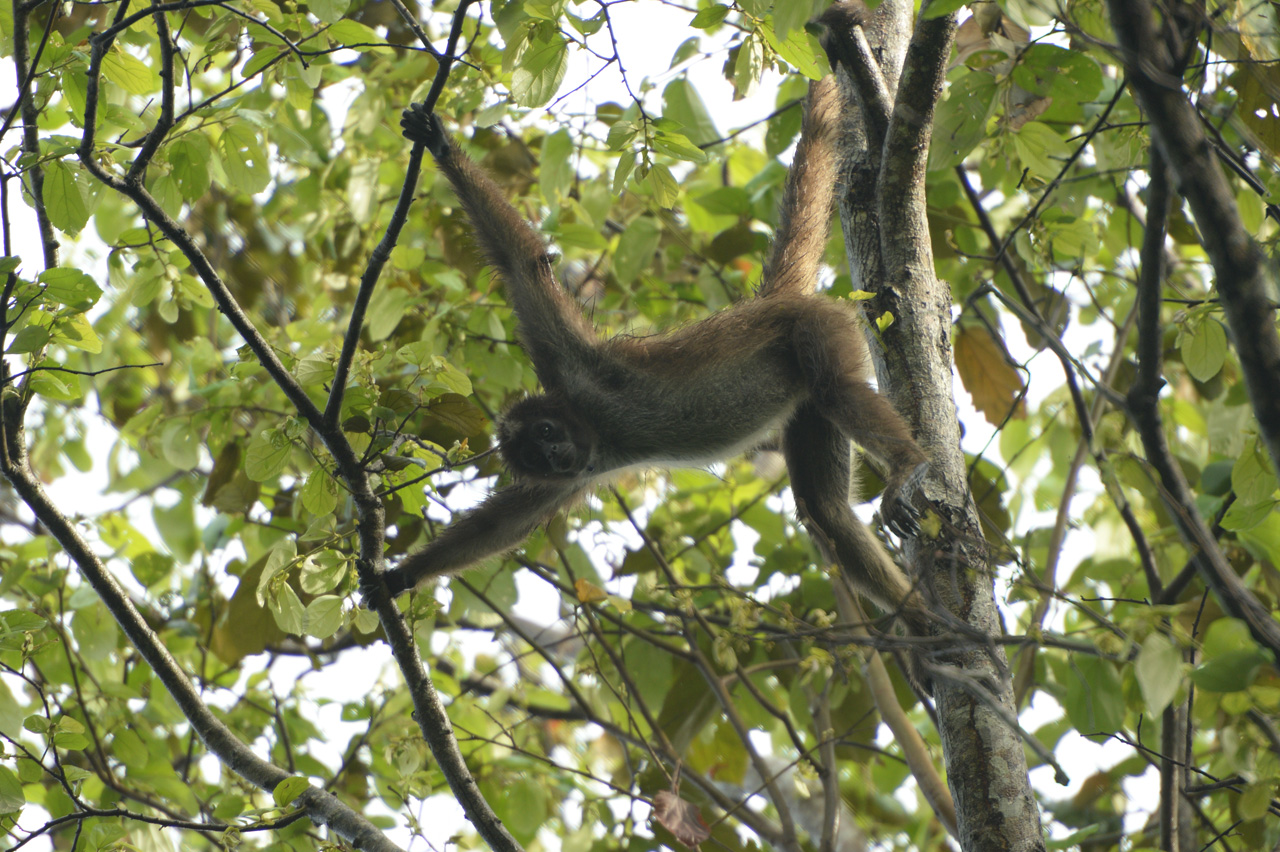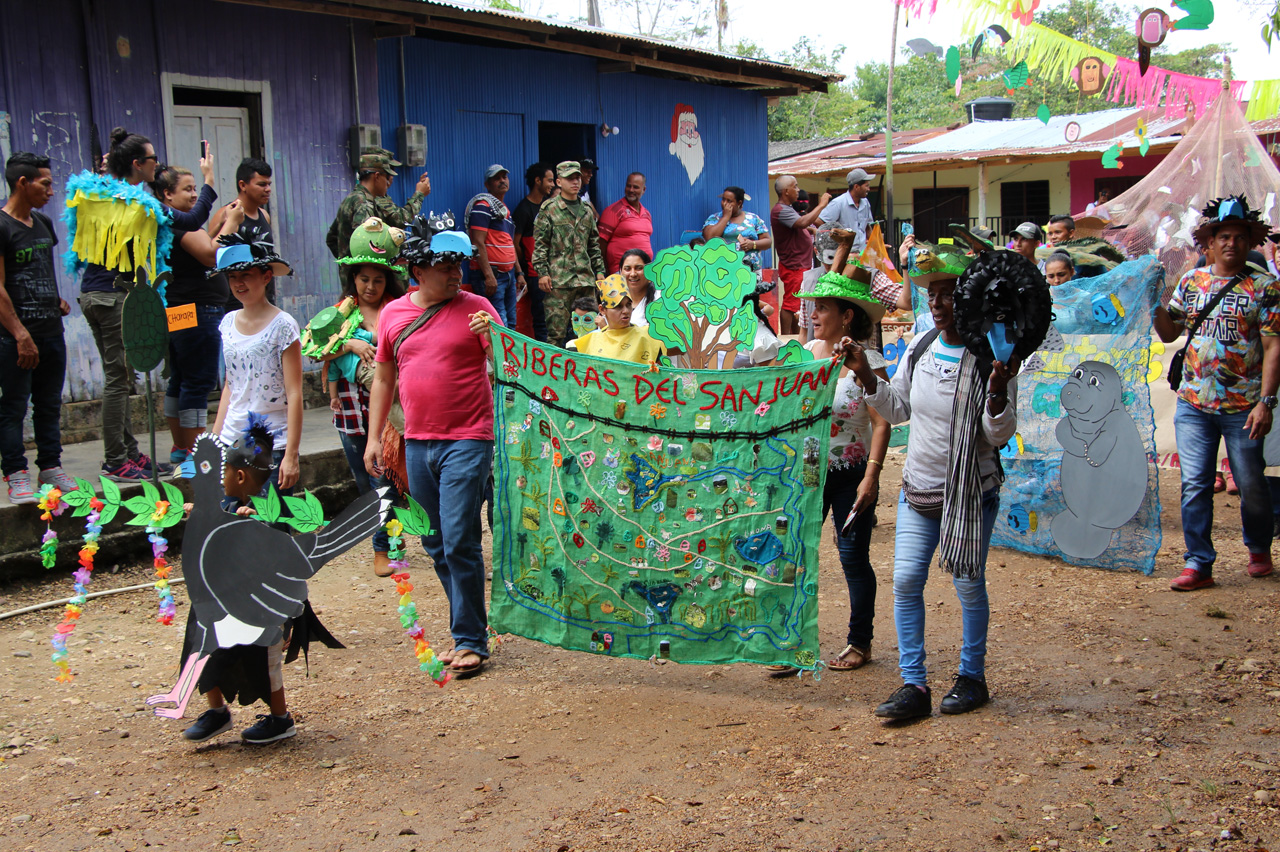Ateles hybridus
This species is characterized by its long, dark fur, with a color that ranges from brown to black. It is also known as "choibo."
It has long, slender limbs and a prehensile tail that helps it move agilely through the trees. Its face is relatively small compared to its body size, with large, expressive eyes.
These monkeys play a crucial role in the ecosystem as seed dispersers. Due to their frugivorous diet, they consume a wide variety of fruits and disperse more than 99 percent of the seeds through their droppings, thus helping in forest regeneration and maintaining plant diversity.
Ateles hybridus is found between the Cauca and Magdalena rivers in the departments of Bolívar, Antioquia, and Caldas, and from the right bank of the Magdalena River to western Venezuela.
The species is associated with inter-Andean forests and the foothills of the northern Eastern Andes. It is primarily arboreal, spending most of its time in the canopy. They are social animals, living in large groups usually composed of several adult females, adult males, and young, typically led by a dominant female.
 Foto: "EL PATO" Salcedo / WCS Colombia
Foto: "EL PATO" Salcedo / WCS Colombia
Regarding reproduction, females begin reproducing between 8 and 10 years of age. They usually give birth to a single offspring after a gestation period of approximately 7 to 8 months, and the interval between births is typically around 3 years. Newborns are cared for and protected by the entire group, and the bond between the mother and her young is especially strong.
Critical endangered
Ateles hybridus is classified as Critically Endangered according to the IUCN, with a projected population decline of 80% or more over 45 years (three generations).
This decline is primarily attributed to habitat loss, estimated at 20-30% in the regions of Colombia and Venezuela where it resides, according to data from Global Forest Watch.
Another significant threat is intensive hunting for human consumption and the pet trade. Hunted populations can decrease by 80% or more over several generations.
Restoring their forests
Since 2014, we have been working to protect this species in the Magdalena Medio region, in partnership with the Fundación Proyecto Primates. We implement restoration actions to connect forest fragments where the species is found, aiming to reduce population isolation and decrease inbreeding.
 Foto: Sebastián Orjuela / WCS Colombia
Foto: Sebastián Orjuela / WCS Colombia
Similarly, through conservation agreements, habitat preservation for the species is being ensured. These agreements, along with collaborative work with local communities, have led to the annual celebration of the 'Festival of the Choibo and Its Friends,' which has significantly reduced hunting and increased the communities' appreciation and valuation of the species.
Additionally, 1,300 hectares of forest have been connected for this primate through the planting of native trees along 6.2 kilometers of corridors. Through assisted relocations, five solitary individuals were successfully reintegrated into different groups of the species.
As a result of all the implemented actions, sustained through conservation agreements, the spider monkey's occupancy increased from 0.15 (± 0.09) in 2015 to 0.65 (± 0.13) in 2020. At the start of the interventions, the species was only recorded in 15% of areas with suitable habitat, while in 2020, this presence increased to 65%.
Currently, with the participation of the Wildlife Conservation Project (PVS), we are conducting new monitoring to assess the status of the species and the impact of our conservation efforts. Learn more about actions supporting their recovery here.
Translated with AI support